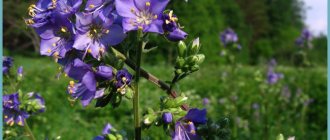If you need an unpretentious, bright plant with a long flowering period to decorate your garden, then garden chrysanthemum is an ideal option. China is considered its homeland. The perennial decorates the suburban area from July to October. At the end of autumn, bright bushes remain practically the only flowers, while all the others have long since faded and lost their decorative value. The variety of colors (from white, yellow and pink to lemon, green, and purple), types and forms (simple, double and large-flowered) of garden plantings is simply amazing.
- Cuttings
- Watering chrysanthemums
Chrysanthemum is the real queen of autumn. Depending on the species, it reaches from 20 to 130 cm in height. The classification of garden plantings is determined by size, color and flowering period. Certain species can grow not only as a bush, but also in the form of a single stem. The inflorescence is presented in the form of a basket, which consists of many individual flowers. The diameter of which ranges from 4 to 9 cm. Certain varieties boast hundreds of flowers in one brush.
Chrysanthemums: varieties and varieties
It is not for nothing that they say about perennial chrysanthemums that they inspire optimism in a convinced pessimist. After all, these lush and fragrant flowering plants can brighten not only a personal plot, but also the life of a gardener who grows picturesque plants and garden crops.
Chrysanthemums can be completely unusual and bright colors
Every time you buy a bag of an unknown variety, you are surprised by the duration of its flowering, the magnificent colors, the height of the plant, the shape and texture of the petals, as well as the degree of their terry.
Breeders divide chrysanthemums into:
- simple forms;
- large-flowered;
- terry.
There is also a gradation in color, flowering periods, flower size and decorativeness. Many subspecies of chrysanthemums are intended only for subsequent cutting and making bouquets - these are the so-called bouquet chrysanthemums. Their height can vary from 15 to 150 cm. Such a wide range allows you to decorate entire flower beds with a variety of crops that will bloom and delight the eye at different times - from mid-June until the first snow falls.
Chrysanthemum flowers of various shapes and sizes
As for the color of the buds, it is impossible to immediately list all the colors and shades. There is an incredible number of colors that excite the imagination: snow-white and lemon, orange and purple, crimson-red, lilac and emerald.
The historical homeland of chrysanthemums is Northern China, where residents were actively involved in the selection of this amazing and, fortunately, unpretentious garden crop. Thanks to the merits of professional breeders, today it is possible to grow luxurious varieties of perennial chrysanthemums with excellent consumer properties.
The most common and famous variety, “Early Yellow,” is close in decorativeness to Japanese anemones. Today there are about 700 varieties of these garden plants.
- Very popular spray chrysanthemums, which are equally suitable for arranging the garden landscape and for cutting.
Bush chrysanthemums - There are also feathery double flowers with a very dense and lush planting of petals. Due to this, they take the shape of a ball, completely covering the flower bed.
Terry chrysanthemums - Bristle-shaped chrysanthemums attract attention with their thin and slightly curled petals, which look like graceful brushes.
- Pompom varieties chrysanthemums boast a perfect spherical shape. Dense terry, bright colors and long flowering in any growing conditions are the undoubted advantages of this variety.
Pompom chrysanthemums - Semi-double varieties include a great variety of shapes, colors and structures. A striking representative of this group is a garden plant with slightly drooping inflorescences. Their center is almost not closed, and along the edges there are petals of the most unexpected shades and shapes.
- Simple varieties are represented by very elegant and at the same time uncomplicated inflorescences, outwardly reminiscent in shape of a garden chamomile.
Simple varieties - Perennial chrysanthemums of anemone-like varieties are easily recognized by the simple shape and slightly convex core of the inflorescence. She seems to rise above the petals and reach for the sun. These are the most delicate representatives of garden chrysanthemums, which smell pleasantly and create a good impression.
- Spoon chrysanthemums belong to rare varieties. Just by the name you can understand that flowers are somehow magically connected with spoons. The thing is that the shape of each petal resembles a teaspoon.
Spoon chrysanthemums
Flowerbed for beginners
To plant a flower garden of perennials yourself, you need to adhere to the following principles:
- In the central part of the flower garden, tall plants are used: roses, asters, lilies, peonies, phlox, lupins, clematis, meadow bells, echinacea, daylilies.
- Medium-sized perennials complement tall flowers. Medium-growing ones include tulips, irises, cornflower, catnip, sage, yarrow, lavender, primrose, and fern.
- The edges of the flower bed and gaps are decorated with ground cover plants. Among them are chickweed, periwinkle, Renard's geranium, carnation, navelwort, lungwort, and speedwell. The cushion aster looks good.
Particular attention should be paid to the flowering time of certain plants. It is necessary that the flowerbed retains its beautiful appearance all season long.
Here are some examples of when the varieties used in flower beds bloom:
- Pink paniculate phlox. It is better to plant it in early spring or autumn in sandy or well-drained soil. The plant blooms from mid-summer to autumn.
- Pink astilbe. The flower loves fertile, loose soil. Blooms from late June to August.
- Purple-silver daylily. It is planted in spring in fertilized and well-drained soil. Loamy soil with an acidity of 6-6.5 pH is suitable for it.
- Lavender Heuchera. Blooms from May to July. Loves soils without stagnation.
- Geranium. It blooms from July to autumn and is distinguished by its lush form.
Tall flowers can be planted singly, while small ones are best planted in groups. In this case, you need to look at the flowerbed from different sides of the garden, and from everywhere, tall flowers should be visible in the center, and low-growing flowers should be visible at the edges. To avoid bald spots, plants are planted close to each other, but not crowded.
Before you start creating a flower bed, you need to draw up a suitable plant arrangement. You can do this yourself, or you can take ready-made patterns of flower beds from perennials, developed by specialists.
Chrysanthemums: planting and care in open ground
Perennial chrysanthemums really do not like darkness and high humidity, so it is better to plant them on a small hill and in a sunny place. This will protect you from pulling out the shoots and changing the time and duration of flowering.
Attention! Chrysanthemums have a shallow root system, so drying out the soil is unacceptable!
For planting, it is recommended to use very loose and moisture-permeable soil with a sufficient content of nutrients. If the soil is too dense, it is recommended to mix it with peat or compost. To improve drainage qualities, you can use coarse sand and fine gravel.
Attention! Garden chrysanthemums, which are not at all labor-intensive to grow, prefer a neutral soil mixture.
For planting, choose a cloudy, or even better, rainy day. A hole up to 40 cm deep is watered abundantly and drainage is done. Then the chrysanthemum is placed and lightly sprinkled with earth.
Chrysanthemum feels great in the shade of trees
Attention! The plant should not be deeply buried, because the root system grows parallel to the ground.
If low-growing varieties are grown, then you need to worry about additional support in advance. A couple of days after planting, you can remove the growing point on the crop. After another 3 weeks, the top of the shoot is carefully broken off.
Advice! After planting the plant in the ground, shade it using non-woven material. Make sure that it does not touch the leaves of the plant.
Legends, beliefs and magic
The Chinese parable of the chrysanthemum attributes its origin to a greedy dragon. The flying serpent wanted to deprive humanity of the Sun, but did not calculate its strength. He grabbed the fireball with his paws, but could not hold on to the scorching luminary. The eggs scattered from the sun fell to the ground, and chrysanthemums sprouted in those places.
The Japanese version of the origin of the chrysanthemum says that during the reign of a cruel emperor in China, the following story happened. The ruler was not afraid of anything except his own old age and death. To create an elixir of immortality, he summoned doctors from all over the world. Only one of them undertook to help him, warning him that the drug could only be made from one plant growing on distant islands. But a person with pure thoughts must collect its flowers.
The emperor understood that neither he himself nor his servants were suitable for this mission. Therefore, a ship was equipped for the expedition, gathering on board 300 innocent young girls and boys, led by a wise doctor. Arriving in distant lands, the elder decided that returning to the emperor would be their last day of life, because he would not want to share the secret of the elixir of immortality with anyone. Therefore, it was decided to stay on the islands. So, out of love for beautiful chrysanthemums and the desire to keep its miraculous magic secret, a new island state was formed - Japan.
The European variation carries a sad connotation. The legend says that chrysanthemums sprouted on the son’s grave from the tears of a grief-stricken mother, in place of artificial wreaths lying. Therefore, in European countries, chrysanthemum is associated with a tragic meaning. In Italy it symbolizes love and sadness at the same time, and in England and France it is used in mourning ceremonies.
Eastern culture, on the contrary, endows the flower with limitless magical possibilities for prolonging life and preserving health. Thus, a yellow chrysanthemum, collected on the 9th day of the 9th month according to the eastern calendar, has miraculous properties, driving away bad things and protecting the house from misfortunes. According to Feng Shui, these flowers establish a balance between the feminine and masculine principles in the home. Gifted to a man, they enhance masculine energy, and to a woman – feminine energy. If you wear dry chrysanthemum or jewelry with its images as a talisman, it will give you self-confidence and help you achieve your goals. The Chinese still practice washing their face in the morning and drinking dew from chrysanthemum petals. According to one belief, this helped one Taoist monk live 700 years.
Plant care
When growing garden chrysanthemums in your garden, it is important to remember that watering should be moderate, otherwise the plant will rot from excess moisture. The exception, perhaps, can only be a very dry and hot period.
Attention! Lack of moisture can lead to woodiness of the plant stems and loss of its decorative effect.
Further care for perennial garden crops will not take up much of your time. Regular watering, thorough loosening, timely fertilizing and spraying against various parasites are all the measures that are required for the full growth and colorful flowering of chrysanthemums.
The balance of moisture in the soil is very important for the crop.
You need to take special care of the crop closer to cold weather and frosts (late October). Despite the fact that chrysanthemums tolerate low temperatures well, it is better to build a frame for them with a film coating. This simple measure will allow you to admire the bright colors and lush blooming of delicate flowers for another month. The frame can be removed by December, and the bushes can be planted in pots and placed on the windowsill in a bright veranda, where the chrysanthemum will bloom until January.
What do yellow chrysanthemums look like?
Judging by the description of the plant, the yellow chrysanthemum can look different; depending on the subspecies, the bush differs in size, degree of color saturation of the buds, and the shape of the inflorescences and leaves. Large-flowered varieties are needle-shaped or petal-shaped, bush varieties are tall or short, with daisy-shaped buds or double inflorescences. To create bouquets, large peony-like varieties are mainly used. There are many varieties of culture, each with its own distinctive characteristics.
Comment! The yellow chrysanthemum was the first to appear in nature, and only then artificially breeders developed other shades.
The crop is not particularly demanding to grow. It is drought-resistant, tolerates frosts down to -25 ° C without shelter, and blooms well even in areas located in partial shade. Only peony varieties, which are recommended to be bred in greenhouse conditions, are considered capricious.
Warning! Tall varieties of the crop require tying to a support.
Fertilizer and feeding of chrysanthemums
The plant is fed weekly with mullein infusion in a ratio of 1: 10. Lush flowering can be achieved by adding a balanced amount of phosphorus and potassium fertilizers to the soil, and green mass can be increased using nitrogen-based fertilizing.
The more often you feed the chrysanthemum, the more magnificent and longer its flowering will be.
Attention! When applying fertilizer, it is important to ensure that the fertilizer does not get on the leaves and cause them to burn! It’s better to underfeed the plant than to burn it!
What does color say and what is it combined with?
Bouquets are made in a single color scheme or combine several different shades. When decorating them with your own hands, learn in advance about the compatibility of shades in one composition, so as not to get into trouble:
- A bouquet of yellow chrysanthemums is given as a gift, expressing fidelity, sincerity and wishing financial prosperity and longevity.
- White ones are presented as a sign of deep sympathy, love, purity and innocence, sincerity of feelings, joy.
- Purple flowers symbolize fidelity, devotion, trust, and friendly participation.
- Orange tones in the composition are a sign of personal pride with a mixture of coquetry.
- Blue flowers symbolize dreams, hope and constancy of thoughts.
- Red, purple, scarlet tones express a mixed palette of feelings: passion, ardor, jealousy, love.
- Green bouquets appeared recently, but quickly became popular; with their help they express hope, symbolize the beginning of a new thing, the birth of life.
In one bouquet next to a chrysanthemum, the ones that last the longest with proper care are:
- alstroemeria 4 weeks;
- cloves 4 weeks;
- lilies 3 weeks;
- dahlias 2 weeks;
- gerberas 2 weeks;
- hydrangeas 2 weeks;
- roses 1 week.
Bouquets of chrysanthemums are complemented with greenery, ears of corn, and berries. The leaf ones most often used are:
- aspidistra;
- asparagus;
- bergras;
- hispophila;
- hypericum;
- craspedia;
- monstera;
- ruscus;
- salal;
- fern.
Plant propagation
Breeders recommend propagating the perennial crop only by cuttings and dividing the bush, since the seeds often do not preserve the variety.
Attention! It is best to propagate in late spring (May), when the likelihood of frost is minimal. The beginning of summer is also a good time to replant the plant.
If you only got the material for planting closer to autumn, then have time to plant it before mid-September so that the first frosts do not break the spirit of the plant. Otherwise, the seedling can be transplanted into a wide, but (very important!) shallow pot, having first trimmed it low.
Chrysanthemum reproduces well by cuttings
The container with planted chrysanthemums is placed in a dark place (this can be a loggia or terrace), where the temperature is kept at a constant level of 4-6 °C. Throughout the winter period, it is necessary to maintain an optimal level of soil moisture.
At the end of winter, the bushes can be planted in a greenhouse or flower bed, where they should be watered as often as possible. By the end of March, when the shoots have grown a little, you can cut the cuttings and carefully plant them in a box with a mixture of soil, humus and sand, then cover tightly with a sheet of glass. A month later, when the cuttings have taken root, they can be planted in wider containers, and then in open ground.
Application in landscape design
Many people are interested in where to plant chrysanthemums on the site? This can be done solo, in small groups, in mixborders, or as borders. The main thing when planting them:
- take into account the height of the bushes;
- calculate the timing of flowering;
- choose beautiful color combinations.
Attention: chrysanthemum flower beds combined in height look interesting and original. Tall plants are planted in the background, medium ones in the middle, and low ones at the very edge.
We looked at how to properly plant a chrysanthemum on a site in the spring, what care it needs to provide, and what other plants it combines with. If you follow all the recommendations of experienced gardeners, you can make really bright and unique flower beds that will decorate your area with a riot of colors from the beginning of summer until the first severe frost.
Diseases and pests
Since a great variety of different microorganisms live in any soil, the plant must be periodically treated with special preparations that will reliably protect against diseases and pests, and root rot. Abundant watering will protect the crop from mites and aphids, which cannot tolerate moisture. Ratibor, Aktara, Fitovermi and other preparations will save the bush chrysanthemum from snails, leaf rollers and caterpillars.
White rust
Medicinal properties
According to scientific research, there is a bit of truth in endowing the chrysanthemum with mystical properties. The petals contain potassium, selenium, zinc, magnesium, which are important in the treatment of the nervous system and eye diseases. In Chinese medicine, all parts of the plant are used. Dried leaves for migraines, dried inflorescences to increase appetite, petals in ophthalmology. In Europe, medicines for Parkinson's disease have been developed based on essential oils from the juice of the leaves. In folk medicine, recipes are given for the treatment of hypertension, abscesses, conjunctivitis, rheumatism, arthritis and in complex therapy. Used to enhance immunity and in aromatherapy.
A variety of edible chrysanthemum, Tonghao, is eaten as a side dish or dessert in China. Considering the life expectancy and appearance of Asian peoples, perhaps this ingredient is the key to their elixir of youth, as ancient Eastern legends say.
Shrub chrysanthemum: combination with other plants
A perennial garden crop goes well with fruit trees (it can be rowan or wild apple tree). A good combination is provided by raspberries, sea buckthorn and barberry growing nearby. Shrub chrysanthemum looks incredibly attractive in company with decorative leafy plants - hydrangea, ivy, wild grapes, lemongrass. The chrysanthemum looks charming and gentle surrounded by tall perennial plants: dahlia, bush aster, asparagus and other plants.
Chrysanthemums in landscape design
"Birth of a Family"
A wedding bouquet in cream and green tones meets modern fashion trends. If you prepare the necessary elements, you can make a beautiful wedding bouquet of roses and chrysanthemums with your own hands. You will need:
- 25 roses in milky, cream or pale pink;
- 2-3 branches of green small chrysanthemums;
- porta bouquet holder;
- piaflor "oasis";
- double sided tape;
- scissors;
- white satin ribbon;
- small spruce branches.
Bouquet design for the bride with photo:
- We trim the stems of roses and chrysanthemums, but do not throw them away. We remove the thorns and lower leaves, and spread the trimmings in an even layer on double-sided tape.
- We apply a “mat” of scraps to the leg of the porta bouquet maker to imitate a bouquet on its stems.
- We cut out a ball from the piaflora according to the volume of the middle of the porta bouquet. We saturate it with a solution for cut flowers. We do not force the sponge into the water, but wait a couple of hours for it to sink to the bottom on its own.
- We place the piaflora in the middle of the porta bouquet and decorate the outer edge with rose leaves.
- We stick roses and chrysanthemums into the “oasis” sponge, starting from the center to the outer edge.
- We fill the voids with spruce, thuja or cypress branches.
- We decorate the leg with a white satin ribbon, winding several layers, for the convenience of the bride and so that the artificial “stems” do not come off.
Types of chrysanthemums: photos
"Winter freshness"
Bouquets of white, yellow chrysanthemums and irises look elegant and joyful. Moreover, irises can be blue, lilac, purple, white or yellow. You can wrap such a composition in sisal, kraft or the usual packaging film. In such tandems, the leading role is given to the bush chrysanthemum, and the iris plays the role of an accent. Let's prepare for work:
- chrysanthemum branches 5 pcs.;
- irises 8-10 pcs.;
- adhesive tape for fixation;
- decorative satin ribbon;
- scissors;
- packaging.
Design of a composition of chrysanthemums and irises:
- Starting from the central branch, we will assemble a bouquet using a spiral technique.
- We alternately place elements of different textures.
- We tie the bottom of the stems and straighten the flowers.
- Cut the stems to the same level.
- We wrap it in packaging if desired and decorate it with a satin ribbon and tie a bow.











